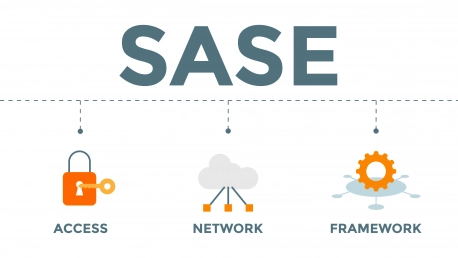As enterprises explore the digital landscape, the need for a seamless and secure IT infrastructure is paramount. The Secure Access Service Edge, or SASE, is the budding innovation that pledges to transform enterprise network and security paradigms. Its adoption heralds a symbol of agility and security for futuristic IT frameworks. This guide will walk you through the judicious embrace of SASE, laying out its myriad benefits, the challenges to be surmounted, and the key considerations for a triumphant deployment.
Understanding SASE and Its Benefits
The essence of SASE is its merger of network security functions into a singular, fluid wide-area networking capability. This convergence enables companies to administer dynamic and secure network access with unprecedented efficiency. The crux of SASE’s allure lies in its knack for enhancing network performance while steadfastly bolstering security—a combination once deemed incompatible. SASE’s promise shines brightest for organizations with complex operations spanning across locations, offering them fortified data protection and smoother network management. Here, we’ll delve into its inherent synchronized structure, how it redefines IT management simplicity, and unpack why SASE is an undeniable boon particularly for geographically widespread industries.The fusion that SASE offers does more than just streamline workflows; it fortifies a business’s technological defenses, standing as an innovative bulwark in the face of evolving security threats. These traits are increasingly critical in an era where the cloud is not merely an asset but a requisite, pushing the envelope for seamless and safe connectivity. SASE steps into this breach, effectively becoming the custodian of next-gen enterprise operations.
The Allure for Distributed Enterprises
For sectors such as retail, insurance, and healthcare, where operations reside over expansive terrains, SASE stands as nothing short of a revelation. Its suite of capabilities, from improved WAN connectivity to enhanced branch firewall provisions, presents a bevy of operational windfalls. Such distributed enterprises can leverage SASE to not only ensure stringent threat defense but also to optimize network resources, thereby elevating their market competitiveness. Here, we’ll discuss real-world scenarios where SASE proves its mettle, enabling faster troubleshooting, clear-cut network visibility, and substantial operational savings.Beyond the tangible perks, SASE addresses the overarching demand for digital transformation, aligning network agility with business volatility. Enterprises no longer need to grapple with disparate security and networking tools. Instead, they enjoy a unified and adaptable infrastructure, capable of scaling with their ventures and the varying demands of global marketplaces.
Evaluating Vendor Claims and Solutions
However, the path to a bona fide SASE environment can be obscured by the mist of vendor hyperbole. The market is teeming with SASE solutions, each brandishing features that, upon rigorous examination, might falter in real-world applicability. Evaluating vendor claims becomes a game of discernment—separating the wheat from the chaff, revealing substance beyond flashy specifications. This section emphasizes the significance of meticulously analyzing vendor offers and spotlights the menace of superficial compliance, where capabilities listed frequently belie their practical potency.When shopping for SASE solutions, one must regard connectivity support claims, particularly pertaining to remote and home office setups, with a critical eye. Vendors often tout wide-ranging support, but many solutions are optimized for branch offices while they falter at providing consistent home office connectivity. Companies must hold vendors accountable, ensuring the solutions are not merely a checkbox but a genuine fit for unique organizational needs.
Overcoming Organizational Challenges
Melding networking and security operations into a SASE-driven model isn’t merely a technical revamp—it’s a cultural reformation. Combining these traditionally individual departments necessitates organizational realignment and adoption of new collaborative cultures to manage SASE platforms efficiently. This section will broach ways to surmount these challenges, focusing on formulating shared goals and processes to empower a smooth transition to a synergistic SASE ecosystem.Organizations will need to condition their teams for flexibility, cooperation, and continual learning to harvest the full benefits of SASE. This may demand new governance structures, consensus on shared tools, and processes, along with education around the strategic advantages of SASE to ensure its successful integration into daily business operations.
Embracing a Multi-Vendor Approach
In the quest for an optimally bespoke SASE solution, the notion of a one-size-fits-all single-vendor system has been met with skepticism. Instead, there lies a noticeable tilt towards a multi-vendor strategy, allowing for greater customizability and a precise match to an enterprise’s unique demands. This segment will dissect the incentives behind a multi-vendor SASE model, tipping the balance back towards corporate command and away from vendor lock-in.Intrinsically, a multi-vendor approach provides the leverage to negotiate and select services that best cater to the individual aspects of an enterprise’s needs. It heralds a pragmatic era, where adapting an array of best-in-class services equips businesses with a tailored SASE framework, mitigating the risks associated with a single vendor’s limitations or future uncertainties.









